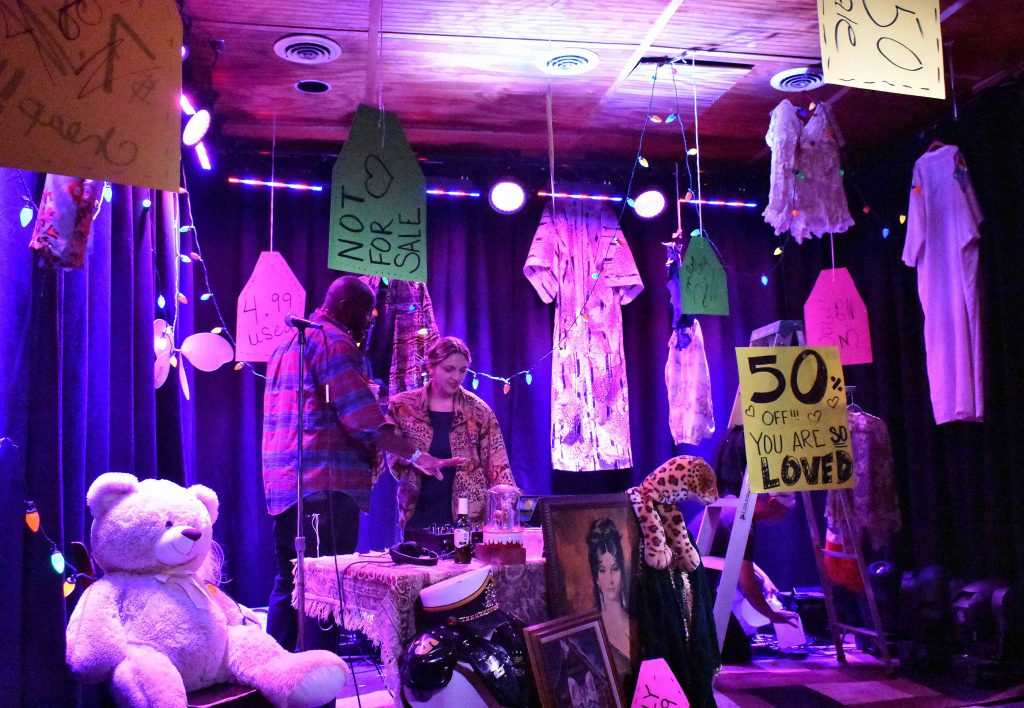I didn’t want to admit it for a long time.
In fact, it wasn’t until I saw her that I was sure I was bisexual. I was even surer in the months following, as our relationship blossomed, and I fell in love for the first time.
We happened easily, napping in hammocks, cooking dinners together and going on drives with all of the windows down on warm afternoons.
Though falling in love with her was easy, coming to terms with what I thought was our reality was hard. As my love for her grew, I began to love myself less.
According to the National Alliance on Mental Illness, LGBTQ individuals are almost three times more likely than others to experience a mental health condition such as major depression or generalized anxiety disorder as a result of anxieties associated with being members of the LGBTQ community, including but not limited to coming out, being bullied or ostracized and facing daily discrimination. Individuals who identify as bisexual or questioning or fear revealing their sexual orientation or gender identity have particularly high rates of mental health issues.
Almost every time I thought about coming out publicly, my chest would constrict, my heart would start racing and my palms would sweat. The thought of losing my friends and facing public humiliation sent me into panic attacks, and the aftermath of these left me crying in bed for the rest of the day, unable to concentrate on anything else.
I wondered what my mother would think if I brought my girlfriend home and how we would never be able to spend time together outside of the confines of our houses. Our relationship, our sexuality, our homes began to feel like a prison, and we were both trapped, relegated to the punishment of constant self-hatred.
Family support plays a significant role in affecting the likelihood of suicide. People who faced rejection after coming out to their families are more than eight times more likely to have attempted suicide than people who were accepted by their families after revealing their sexual orientation.
Members of the LGBTQ community are at a higher risk for suicide because they often lack peer support and face harassment, mental health conditions and substance abuse. The NAMI also reports that the LGBTQ community reports higher rates of drug, alcohol and tobacco use than straight people. In fact, for LGBTQ people between the ages of 10 and 24, suicide is one of the leading causes of death.
Members of this community face not only the general stigma regarding mental health but also a sort of dual or double stigma because of their sexual orientation or gender identity, and this can be especially harmful. When combined with the climate of a college campus and the general stress associated with adjusting to college, the statistics get particularly frightening.
According to a survey conducted in 2015 by the Association of American Universities, 3 in 4 LGBTQ college students report experiencing sexual harassment, and most college presidents are under the impression that sexual assault and harassment are not issues on their own campuses, according to an article from The Atlantic. This is especially problematic because it shows that this problem, along with other forms of harassment and discrimination, is not going away.
In October 2017, students on Cleveland State University’s campus in Ohio found flyers encouraging LGBTQ students to commit suicide. The flyers illustrated a person hanging from a noose and included statistics on LGBTQ suicide rates.
UM Pride Network President Regan Willis, who identifies as male, believes that acceptance is needed at Ole Miss to help foster a more inclusive environment and help improve the mental health conditions of LGBTQ students on campus.
“I get stared at going to class every day. Some people tell me I don’t belong in the bathroom, or people will stand on the bus before they sit in the open seat next to me,” he said. “I know I’m not the only LGBTQ person to experience feeling like an outsider. Education is needed to show people that LGBTQ members are just normal students trying to make it through finals, too.”
Though the University of Mississippi offers many programs and organizations that encourage inclusivity, such as the Center for Inclusion and Cross Cultural Engagement’s annual Pride Camp, the UM Gay-Straight Alliance and UM Pride Network, more efforts need to be taken to make LGBTQ students feel welcome on campus and in Oxford.
While at Ole Miss, I began skipping class, slacking on homework and staying in bed for days at a time. My fear of coming out, combined with adjusting to college, kept me in a state of constant anxiety and depression. This state of mind has continued for months past our relationship’s conclusion and has resulted in a number of self-harming and risky behaviors on my end because I was ashamed and afraid of not being accepted.
“As a community, LGBTQ individuals do not often talk about mental health and may lack awareness about mental health conditions. This sometimes prevents people from seeking the treatment and support that they need to get better,” according to NAMI.
Though you may feel hesitant to access care because you fear being discriminated against, it is important to seek help. Early intervention, support and treatment are vital to recovery from mental health conditions, and there are many resources in place that are specifically equipped to help LGBTQ people deal with these conditions.
Recovery is not a painless process – it takes time and effort, and it hurts. However, it is important to remember that you are not alone. It took me a long time to realize that being a member of the LGBTQ community isn’t something to be ashamed of – it just means you have more love in your heart for others. Take the time to share some of that love with yourself.
Resources from the NAMI:
The Association for Lesbian, Gay, Bisexual & Transgender Issues in Counseling offers a list of resources for LGBT individuals and works to educate counseling professionals on LGBT issues.
The Association of Gay and Lesbian Psychiatrists offers numerous resources for LGBT people who are experiencing mental health issues, including a directory of LGBT-friendly therapists.
The Center for American Progress offers a variety of resources, including a report called Why the Gay and Transgender Population Experiences Higher Rates of Substance Use.
The GLBT National Help Center provides multiple resources and access to a hotline and a youth chat line.
GLSEN (the Gay, Lesbian and Straight Education Network) provides an annual report called the National School Climate Survey, which reports on the experiences of lesbian, gay, bisexual and transgender youth in U.S. schools.
The Pride Institute is an unlocked, LGBT-exclusive facility that offers a residential treatment program, including psychiatric care for depression, anxiety and other needs.
The Rainbow Access Initiative works to inform and educate health care providers on LGBTQ-specific issues.
The Trevor Project is a multimedia support network for LGBTQ youth. It provides crisis intervention and suicide prevention.











